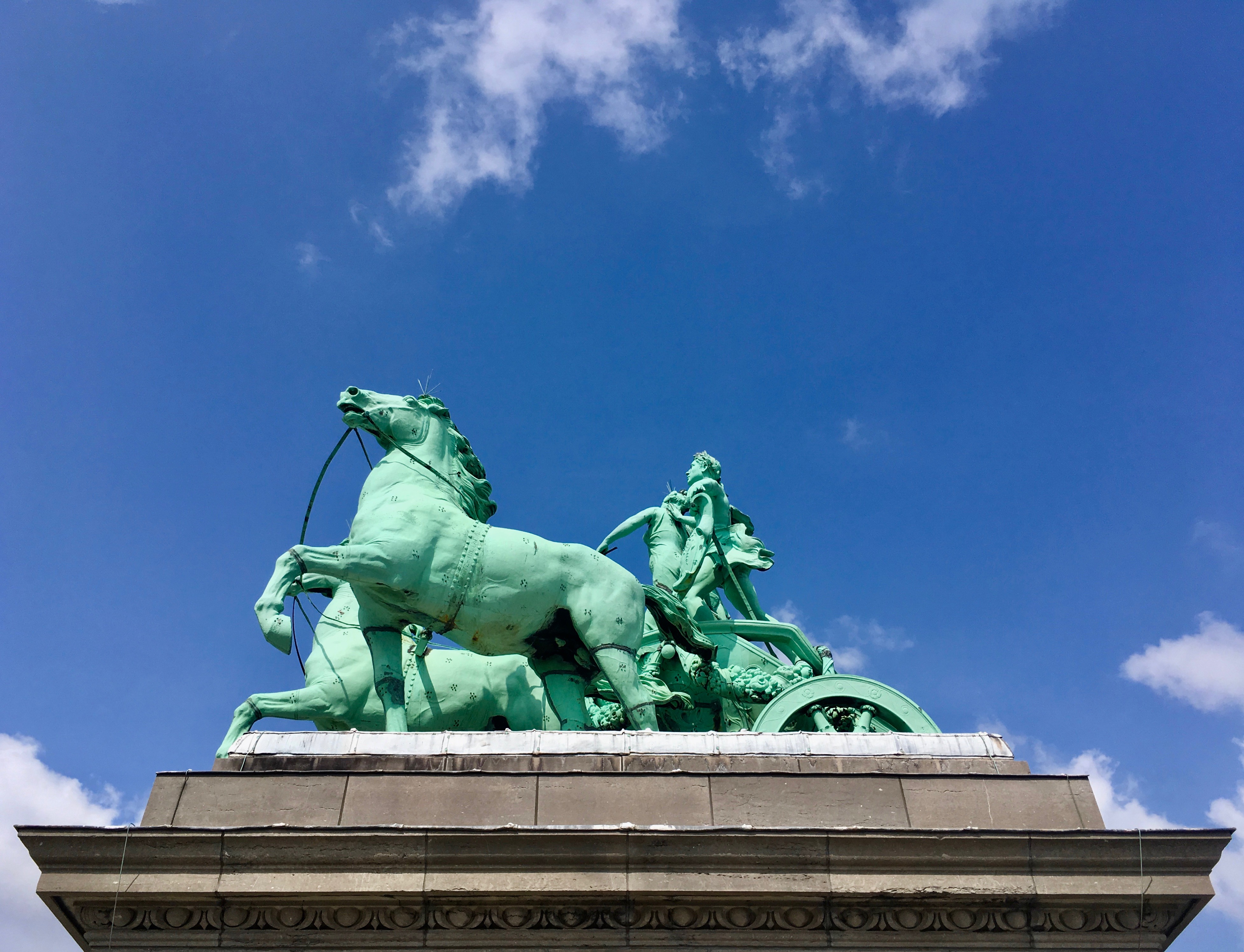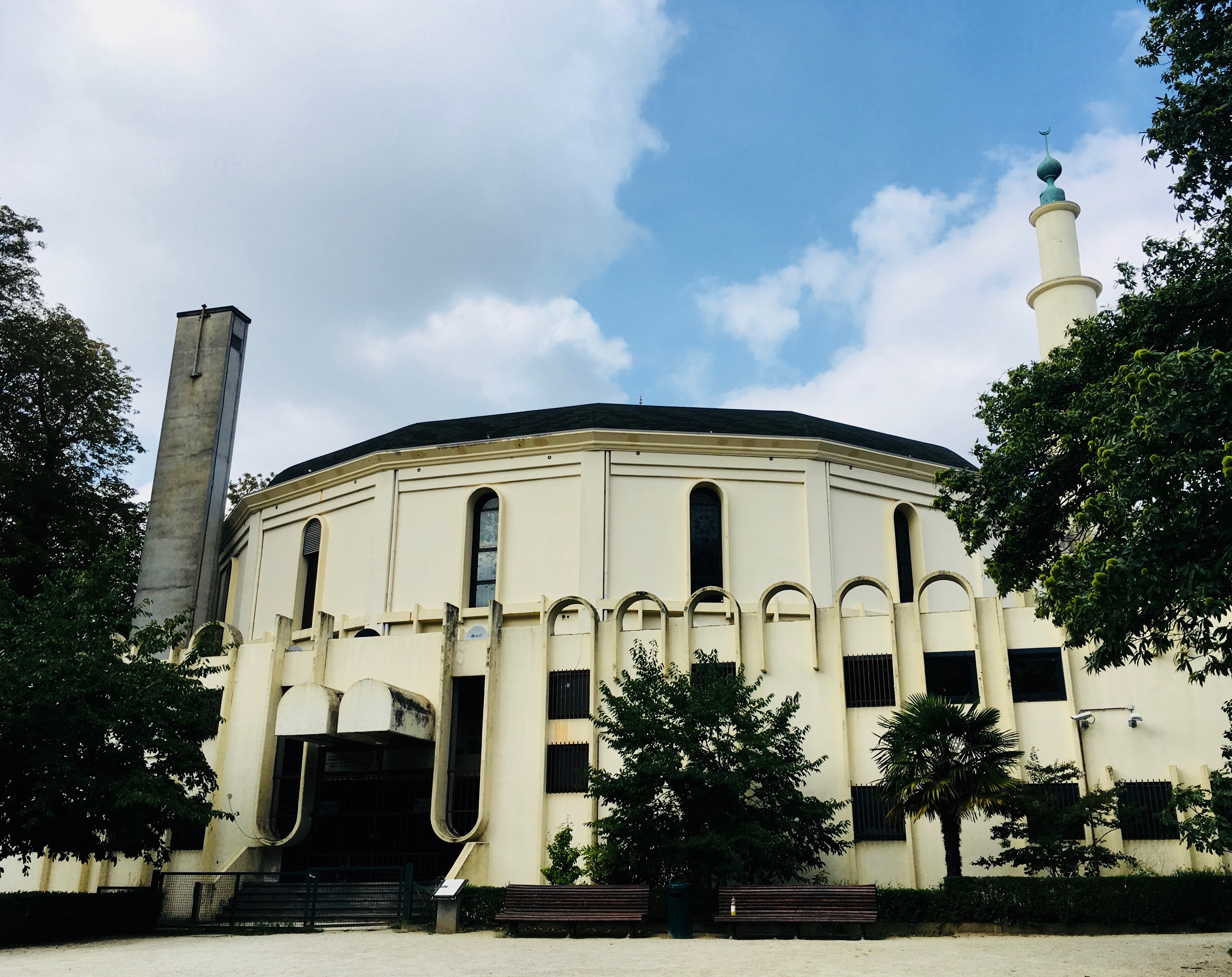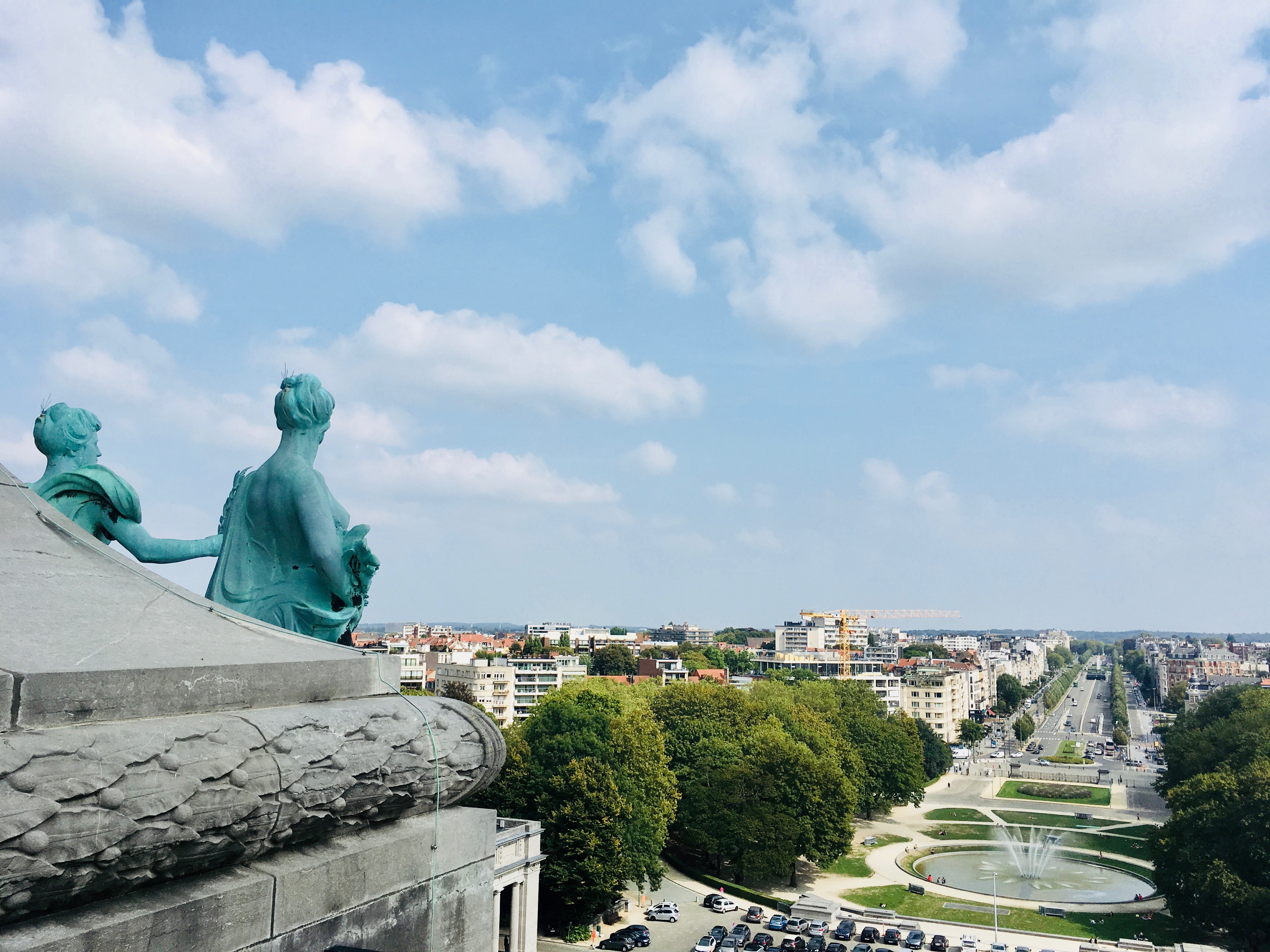10 secrets of Parc du Cinquantenaire
Parc du Cinquantenaire or Jubelpark is one of the most spectacular parks of the Brussels-Capital Region. But it’s more than just a park. It’s also a historical and cultural site. The Cinquantenaire is the only park in Brussels that brings together a collection of museums, monuments, works of art, and gardens all in one place.
The 30-hectare park dates back to the reign of King Leopold II who wanted to develop Brussels into a prestigious European capital on a par with Paris. To achieve his dream, the “builder king” of the Belgians commissioned a large number of buildings, boulevards, and parks.
The space now occupied by Parc du Cinquantenaire used to be a military training ground called the Linthout Plains. In 1880, upon the orders of the king, the area was transformed into a grand exhibition center for the celebration of the 50th anniversary of Belgium’s independence. Thus did it come to be called the Cinquantenaire, which means fiftieth anniversary in English.
But that’s not all there is to discover about Parc du Cinquantenaire. Here are some lesser-known facts hiding within the grounds of this impressive park.
1. It took 30 years and 2 architects to finish the construction of the park’s central monument
The construction project was assigned to Belgian architect Gédéon Bordiau in 1875. His plan was to build a triumphal arch connected to two large pavilions by a semi-circular colonnade. A sculpture in the form of a quadriga or a chariot drawn by four horses would be placed on top of the monument.
However, only the pavilions were completed in time for the 50th anniversary of Belgian independence in 1880. Bordiau continued working on the project until his death in 1904. French architect Charles Girault took over until the project’s completion in 1905.

2. The park’s central monument used to have only one arch instead of three
The Cinquantenaire arcade we see today has three arches made of stone. But once upon a time, it bore only one arch made of wood and plaster.
The idea of a single arch came from King Leopold II himself. The colonnade and the arch were finished in time for the Brussels International Exposition in 1897.

3. The 1904 demolition of the park’s central monument marks the first time Belgians used dynamite to blow up a construction
Following the death of Bordiau in 1904, Girault revised the design for the central monument of Parc du Cinquantenaire. He wanted to build a triple arch in the center of the monument.
The existing structure had to be demolished using dynamite to speed up the process. It was the first time in Belgian history that explosives were used in a construction site.

4. 450 workers labored day and night for 8 straight months to finish the park’s triumphal arcade
King Leopold II ordered Girault to finish the construction project by 1905 for the celebration of the 75th anniversary of Belgium’s independence.
Four hundred fifty workers took turns working around the clock. After eight months, the project was finally completed and the park was inaugurated on September 27, 1905.
The Cinquantenaire arcade is built of blue stone and concrete. It measures 40 meters high and 60 meters wide.
On top of the monument is a bronze sculpture of a quadriga driven by a woman carrying a flag. This work of art by Thomas Vinçotte and Jules Lagae represents the Brabant province of Belgium while eight other sculptures resting at the foot of the monument represent the eight other Belgian provinces.
The Kingdom of Belgium was originally composed of nine provinces until 1995 when Brabant was divided into Flemish Brabant and Walloon Brabant.
5. King Leopold II funded the construction project using revenues extracted from the Congo
The construction project was interrupted several times due to lack of funding. The Belgian government didn’t want to shoulder the costs of the king’s ambitious project. It sparked years of dispute between the monarch and his government.
To sustain the project, the king resorted to funds coming from his operations in the Congo Free State, now known as the Democratic Republic of the Congo.
In 1885, the African country became the personal property of Leopold II. He used revenues gained from the exploitation of the Congo for his construction projects in Belgium.

6. Most of the park belongs to Brussels City, but the fountain area belongs to Etterbeek
Parc du Cinquantenaire is managed by the environment administration of the Brussels-Capital Region, but it belongs to both the Brussels City and Etterbeek communes.
Brussels City owns the side of the park facing the massive square gardens while Etterbeek owns the side facing the fountain.
Just walk from one end of the park to the other, and you’ve been to two Brussels communes in less than 30 seconds.

7. The Cinquantenaire arcade is featured in the SimCity video game
In SimCity, gamers can decorate their own city with landmarks to attract more visitors.
The video game version released in 2013 includes the Cinquantenaire arcade in its list of landmark options.
8. A tunnel and a metro line run underneath the park
The next time you pass through the Belliard Tunnel or ride the Brussels metro line 1, remember that Parc du Cinquantenaire isn’t too far away. It could be just right above you.

9. The park is home to the oldest mosque in the Brussels region
The Cinquantenaire Park is where you’ll find the Great Mosque of Brussels built in 1880 by architect Ernest Van Humbeeck.
The mosque was created as part of the national exhibition for the 50th anniversary of Belgian independence. Today, the building also houses the Islamic and Cultural Center of Belgium.

10. Aside from 3 museums, the park has 4 monuments, 13 sculptures, and 15 of Brussels’s most remarkable trees
It will take more than one afternoon to explore all the treasures of Parc du Cinquantenaire.
The Art and History Museum alone boasts more than 600,000 pieces evoking the history of humanity and civilizations.
Visually impaired people can experience art through the sense of touch in the museum for the blind.
The Royal Museum of the Armed Forces and Military History retraces 10 centuries of military history.
Autoworld walks you through the story of the evolution of automobiles.
The Royal Institute for Cultural Heritage is also located in the park.
Aside from the central monument and the grand mosque, the park also features the Temple of Human Passions built by Belgian architect Victor Horta and the Tower of Tournai by Henri Beyaert.
Several sculptures can be found in the park including a memorial to Belgian pilots who were killed in action, a bust in honor of EU founding father Robert Schuman, and a memorial dedicated to Belgians who died during the colonization of the Congo.
The natural assets of the park include more than a dozen trees listed in the scientific inventory of remarkable trees in the Brussels-Capital Region. Remarkable trees are chosen based on a set of criteria including the size, age, and singularity of a tree.

Lastly, you can get a stunning view of Brussels from the rooftop of the Cinquantenaire arcade.
It’s not exactly a secret, but just in case you didn’t know, the arcade has a panorama deck that can be accessed through the Royal Museum of the Armed Forces and Military History. Just go all the way to the top of the building and enjoy the wonderful vista.



